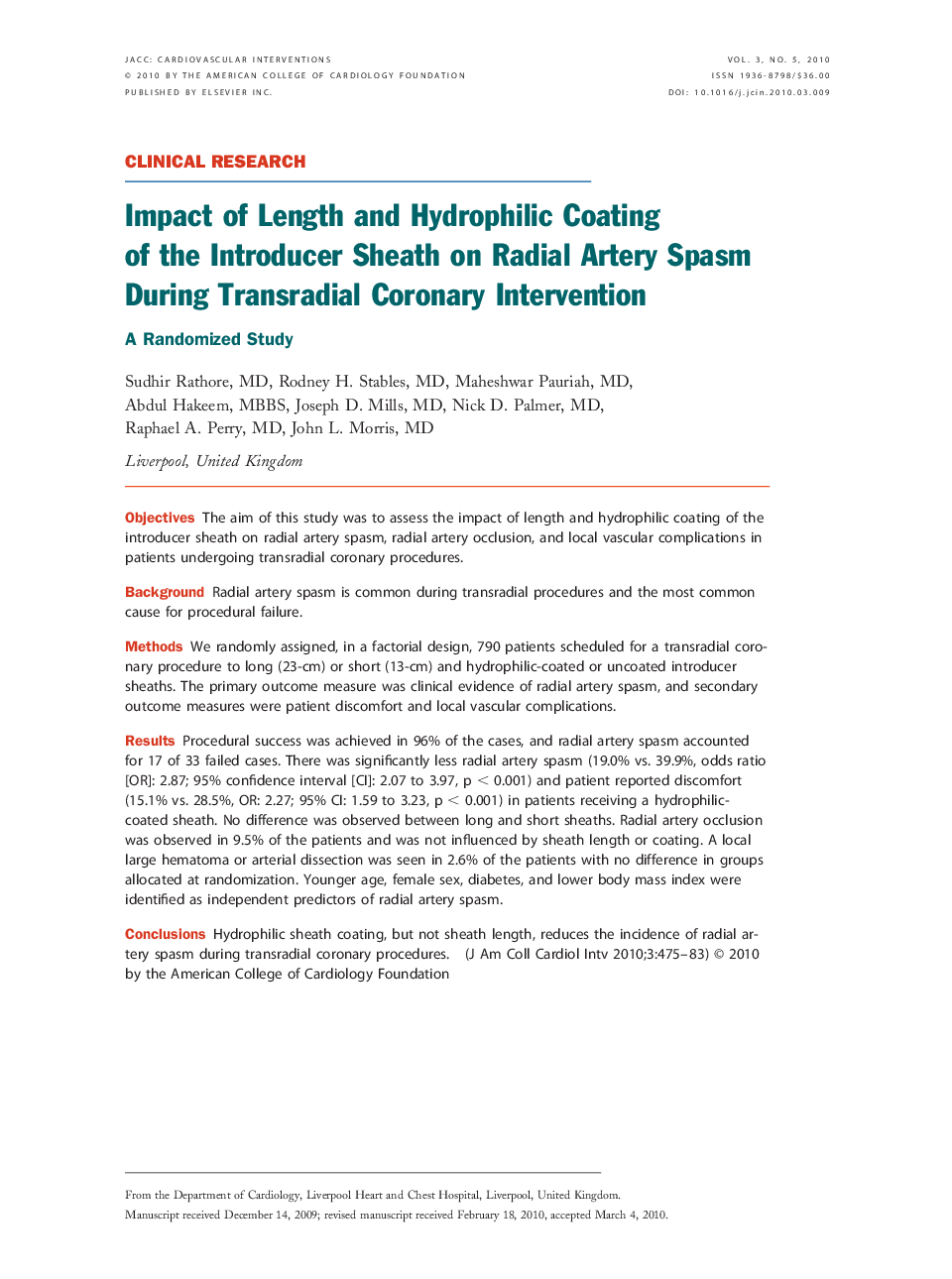| Article ID | Journal | Published Year | Pages | File Type |
|---|---|---|---|---|
| 2941294 | JACC: Cardiovascular Interventions | 2010 | 9 Pages |
ObjectivesThe aim of this study was to assess the impact of length and hydrophilic coating of the introducer sheath on radial artery spasm, radial artery occlusion, and local vascular complications in patients undergoing transradial coronary procedures.BackgroundRadial artery spasm is common during transradial procedures and the most common cause for procedural failure.MethodsWe randomly assigned, in a factorial design, 790 patients scheduled for a transradial coronary procedure to long (23-cm) or short (13-cm) and hydrophilic-coated or uncoated introducer sheaths. The primary outcome measure was clinical evidence of radial artery spasm, and secondary outcome measures were patient discomfort and local vascular complications.ResultsProcedural success was achieved in 96% of the cases, and radial artery spasm accounted for 17 of 33 failed cases. There was significantly less radial artery spasm (19.0% vs. 39.9%, odds ratio [OR]: 2.87; 95% confidence interval [CI]: 2.07 to 3.97, p < 0.001) and patient reported discomfort (15.1% vs. 28.5%, OR: 2.27; 95% CI: 1.59 to 3.23, p < 0.001) in patients receiving a hydrophilic-coated sheath. No difference was observed between long and short sheaths. Radial artery occlusion was observed in 9.5% of the patients and was not influenced by sheath length or coating. A local large hematoma or arterial dissection was seen in 2.6% of the patients with no difference in groups allocated at randomization. Younger age, female sex, diabetes, and lower body mass index were identified as independent predictors of radial artery spasm.ConclusionsHydrophilic sheath coating, but not sheath length, reduces the incidence of radial artery spasm during transradial coronary procedures.
